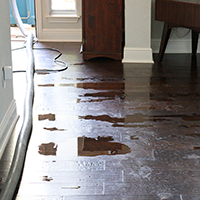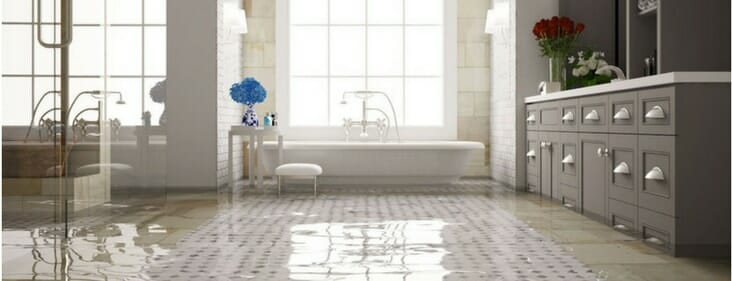They are making a number of good pointers relating to How to Fix a Water Damage Bathroom in general in this content which follows.

The restroom is very susceptible for wet build-up and also potential water damages due to the regular use of water in it. This post supplies easy examination methods to aid discovering water damages risks.
The constant use of water in the shower room makes it very vulnerable for wet accumulation as well as possible water damage. By checking it routinely, you can decrease water associated problems.
The complying with collection of evaluations is very easy to perform and also should be done when in every three months in order to keep your washroom in good shape and also to prevent prospective water problems triggered by the bath tub, the shower, pipe joints as well as plumbing, sinks, closets, and the commode
Do not neglect doing these examinations and be complete while performing them. Bear in mind that these straightforward evaluations can conserve you a great deal of money by supplying very early indications for water damage
Tub and also Shower
The shower and tub call for special interest as well as upkeep. Check the ceramic tiles and also change if cracked. Ensure that there is no missing out on cement between the tiles. Examine as well as change cracked caulking at joints where the walls satisfy the flooring or the bath tub. Clogged drains as well as pipelines troubles will certainly prevent the bathtub from drying as well as might show serious problems below the tub. Talk to a specialist immediately to prevent structural damage. Focus on stainings or soft locations around the bath tub wall surfaces as they might show an internal leak.
Plumbing
Signs for water damage are hard to spot considering that many pipes are set up inside the wall surfaces.
Pay unique interest to floor covering as well as wall surfaces wetness as well as spots as they might suggest an undetectable plumbing issue. Inspect wetness degrees in adjacent spaces also.
Sinks as well as Cabinets
Sinks as well as cabinets are exposed to moisture and humidity daily and also are usually forgotten. Evaluate consistently under the sink and also on the counter top above it. Repair any drip in the trap as it might recommend drainpipe issues. Take a look around the sink, sluggish draining pipes may show an obstructed drainpipe. Replace sink seals if they are broken or loosened.
The Bathroom
The bathroom is an at risk water joint. Inspect the water lines and search for leakages around the commode seat, in the pipe, as well as under the water tank. If you detect any kind of indications of wetness on the floor around the commode, look for leaks in the toilet rim and also storage tank seals.
Understand that hanging toilet dish antiperspirants enhances the chances for obstructions.
Water Damage Signs In The Bathroom To Avoid Cleanup
Musty smell
This is one of the easiest signs to catch because musty smells are so odorous. The damp, earthy, moldy smell should be a big red flag. The smell will develop when moisture gets trapped in surfaces, and begins to facilitate mold growth. Leaking pipes under cabinets, inside walls, and behind shower fixtures will cause moisture to stay trapped and not dry, which will lead to mold growth and spread. As soon as you notice any musty smells in your bathroom, have it checked for hidden water damage and cleanup signs.
Visible mold
If the smell isn’t there to give it away, sometimes you will actually see mold growth. Finding mold in your bathroom is a serious problem, because mold is very harmful to your health. By the time mold growth is visible, it also means that water damage has already occurred and been present for some time. The only way the mold problem can be resolved is to find the source of the moisture and get it stopped. To safely and adequately remove mold, you need to have professionals handle the remediation. Do not waste any time in getting mold problems addressed, fixed, and sanitized so that you can protect you and your family from the many respiratory symptoms caused by mold exposure.
Damaged floors
Bathroom floors should be able to withstand some exposure to water while still remaining in good condition. However, when excess exposure or water leaks occur, they will begin to damage even the most water-resistant flooring. If you notice any cracking, bubbling, staining, or warping on your bathroom floors, there is probably a water leak somewhere causing the distortion. If you notice areas of the floor have become softer, or even have a spongy feeling, there is probably damage to the subfloor. Subflooring is typically made up of plywood. When plywood is exposed to water or moisture, it will absorb it. Once it has become saturated, the weight of the excess water will cause the wood to swell and soften. Check the floors in your bathroom frequently to catch any of these sings before they lead to damaged subflooring.
Changes on walls
When water leaks behind walls, it will cause changes in the drywall. Peeling plaster, blistering paint, and soggy wallpaper are all good indicators that excess water is building up behind the wall. Water leaking behind drywall will cause it to swell and be soft to the tough. If you start to notice gaps along the trim of your walls, or where tile meets the wall, it could also be a strong indicator that there is a leak behind the wall. Any changes, distortion, or damage on the walls should be evaluated as soon as you notice it to prevent further water damage and cleanup.

I came across that blog post about Looking for Signs of Water Damage in the Bathroom when doing a search on the search engines. Be sure to take a moment to share this blog if you enjoyed reading it. Bless you for your time. Come back soon.
Schedule An Appointment